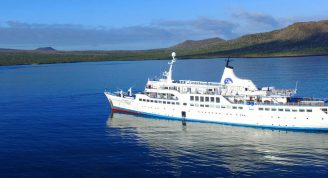Description
This 13-day natural history tour combines an in-depth exploration of the Galápagos Islands with a cultural experience in Quito, Ecuador. The trip begins with 2 nights in Quito, including a World Heritage city tour, before heading to the Galápagos for a 10-night cruise designed to maximize wildlife encounters across diverse ecosystems. With an 8:1 guest-to-guide ratio, early and late excursions, and evening presentations, guests receive personalized attention and enriching insights. Highlights include snorkeling with penguins, witnessing unique species like blue-footed boobies and marine iguanas, and exploring historical sites. The tour also includes domestic flights, airport transfers, and carbon offsets, with optional extensions to relax in Puerto Ayora after the cruise.









